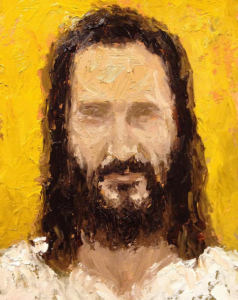
Mormons need to develop visual literacy to avoid misconceptions, according to a BYU Education Week presentation by church history assistant professor Anthony Sweat.
Sweat, who is an artist himself, said famous paintings teach people in a way they don’t even notice. This results in “source amnesia,” which means people forget the source they learned information from, according to Sweat.
He said when people are asked to picture Jesus Christ, the 2,000 stripling warriors, or Abinadi standing before King Noah, they all tend to think of the same images of famous artwork. Sweat said this is not a bad thing, but it is important to practice visual literacy with these images because they are not always historically accurate.
Sweat used depictions of Joseph Smith’s translation of the Book of Mormon as an example of artwork that can teach incorrect facts if viewers are not careful.
While Smith translated the Book of Mormon using seer stones inside of a hat, almost all current artwork shows Smith studying open plates without the hat or seer stones in sight. Sweat said because of this, people often believe the translation process was entirely different than it actually was.

“We need to become more visually literate and understand what artists are doing and why they’re doing it,” Sweat said.
He gave three reasons to explain why art sometimes doesn’t match history.
First, Sweat said most artists are not as focused on historical accuracy as they are on conveying a principle or feeling.
Sweat spoke of his own struggle to paint a scene with Smith using the hat and seer stones in translation. He said it was difficult to give his depiction the same feeling of majesty and light as the more traditional paintings had.

Second, Sweat said it is important that the artist’s intended message and the consumers’ needs speak to each other.
He used the example of nativity scenes and how they can depict different cultures, even though Christ’s birth did not actually happen in those countries. Sweat said this can lead to deeper connections between the viewer and the artwork.
Third, Sweat said artists tend to use symbols, not sources, to communicate truth. He said the common depiction of Christ as a white male with brown hair and a beard has become a symbol and is not meant to be historically accurate.
Sweat said while these reasons provide context for why some artwork is the way it is, it is always important for viewers to exercise visual literacy in the same way people exercise textual literacy.
“Let art teach you to connect with history, but don’t be surprised when art isn’t history,” Sweat said.




